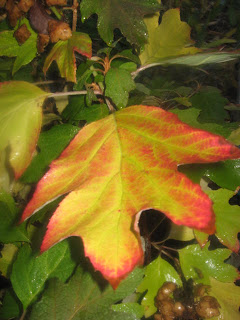Poetry works so well for me because it fits so easily into the daily teaching day. Whether there is an indepth lesson or just ten minutes to share and discuss pretty words, it always works. Here are some resources to guide you as you carve out time for poetry.
Opening a Door: Reading Poetry in the Middle School Classroom by Paul Janecko. One reason I love this book is because each poetry lesson is set up ready to go. He gives background for the teacher in topics that include form, structure, image, and figurative language. There are As You Read and After You Read activities for students, a copy of the poem, and then a follow-up response page. Some may think it a bit canned, but for teachers not really comfortable teaching poetry, or teachers with five preps in a day, the format is user friendly. Tomorrow I have a sub and it will work well introducing a poem for the class. Some poems in the book are “Famous’ by Naomi Shihab Nye, “A Room in the Past” by Ted Kooser, and “The Bells” by Edgar Allen Poe. The collection of poems he chose is another part of the book I enjoy.
Awakening the Heart: Exploring Poetry in Elementary and Middle School by Georgia Heard. I love in her introduction when she says “poetry, like bread, is for everyone.” She spends time in this book explaining poetry environments, reading and writing poetry, toolboxes for crafting poetry, and revision of poetry. When I use this book I always turn to the activity shown on the cover. It is called heart mapping, and is a prewriting activity that gives students many ideas for their own poems. She has students make a map of all the important things in their heart such as people, places, memories, and moments. From there she begins poetry writing. It works!
A Crow Doesn’t Need A Shadow: A Guide to Writing Poetry from Nature by Lorraine Ferra. This book helps us take our students to the world of nature to write poems. She has a section called Poetry Field Trips which includes wildflowers, weather, and birds and other animals. The chapter I always return to is Growing a Poem Naturally. It begins with a word list and moves into creative experiences. This volume also includes beautiful pencil sketches of ways to publish the poems.
Getting the Knack: Twenty Poetry Writing Exercises by Stephen Dunning and William Stafford. The twenty practical poetry exercises are laid out in steps making it simple for the writer or teacher to move through the writing with ease. Some exercise topics are List Poems, Memory Maps, Found Poems, and Confession Poems. I return often to the Headline Poem activity where students begin with words and phrases found from a newspaper’s headlines. Then the task is to discover and present- in an artistic and attractive way- connections in the language.
This is my collection I always keep front and center. I always believe resource books can be adapted for many grade levels. Other titles I would recommend are: Poetry Matters by Ralph Fletcher, Writing Across Cultures by Edna Kovacs, Starting With Little Things by Ingrid Wendt, and Naming the World: A Year of Poems and Lessons by Nancy Atwell.
Pretty Words
Poets make pets of pretty, docile words:
I love smooth words, like gold-enameled fish
Which circle slowly with a silken swish,
And tender ones, like downy-feathered birds:
Words shy and dappled, deep-eyed deer in herds,
Come to my hand, and playful if I wish,
Or purring softly at a silver dish,
Blue Persian kittens fed on cream and curds.
I love bright words, words up and singing early;
Words that are luminous in the dark, and sing;
Warm lazy words, white cattle under trees;
I love words opalescent, cool, and pearly,
Like midsummer moths, and honied words like bees,
Gilded and sticky, with a little sting.
Elinor Wylie
Poets make pets of pretty, docile words:
I love smooth words, like gold-enameled fish
Which circle slowly with a silken swish,
And tender ones, like downy-feathered birds:
Words shy and dappled, deep-eyed deer in herds,
Come to my hand, and playful if I wish,
Or purring softly at a silver dish,
Blue Persian kittens fed on cream and curds.
I love bright words, words up and singing early;
Words that are luminous in the dark, and sing;
Warm lazy words, white cattle under trees;
I love words opalescent, cool, and pearly,
Like midsummer moths, and honied words like bees,
Gilded and sticky, with a little sting.
Elinor Wylie





















